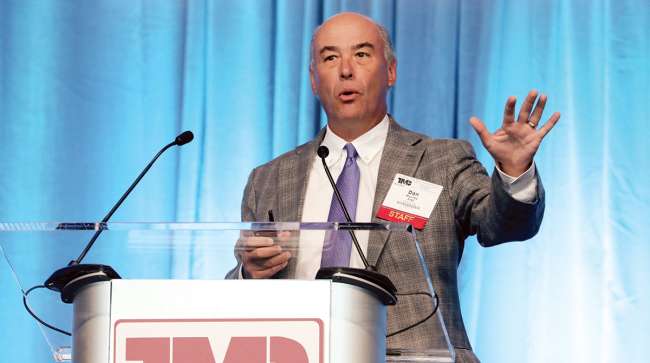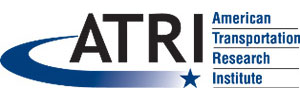Senior Reporter
ATRI Conducts Second Survey on Tech Adoption Rate

[Stay on top of transportation news: Get TTNews in your inbox.]
The American Transportation Research Institute has begun a survey of motor carriers and truck drivers to assess the state of adoption of truck safety technologies, and delve into the reasons for acceptance or reluctance to deploy the technologies.
The anonymous ATRI survey also is intended to measure the success of the Federal Motor Carrier Safety Administration’s Tech-Celerate Now program that has been encouraging adoption of a range of advanced driver assistance system technologies (ADAS), ATRI Senior Vice President Dan Murray said.
TAKE THE SURVEY: Motor carriers, truck drivers are invited
The FMCSA-sponsored Tech-Celerate Now program has been documenting carrier and truck driver issues and opportunities that can speed up, or slow down, adoption of ADAS technologies in trucks.

“The research team is now conducting the second survey of carriers and drivers to better understand how ADAS awareness and perspectives have changed since the program commenced about 14 months ago,” Murray said.
Results of the survey, already underway, will be closed around mid-November and compiled as soon as later this year, Murray said. “It’s a critical survey in that we did a baseline survey to understand where the industry and the drivers are in terms of awareness and perspective, and even adoption. We’ve produced videos and brochures. The question is, did that make a difference?”
The survey asked motor carriers for information on what types of ADAS technologies have discouraged drivers from working at their companies and which technologies have been most effective in improving on-the-road safety.

Research shows that 41% of technicians leave the industry within the first two years. Host Michael Freeze asks, how can technician recruiters and maintenance leaders decrease that percentage? We talked with Ana Salcido of Navistar and Stacy Earnhardt of TMC. Hear a snippet above, and get the full program by going to RoadSigns.TTNews.com.
The ADAS systems that the Tech-Celerate program have been encouraging carriers to deploy range from automatic emergency braking and adaptive cruise control to active lane centering and driver-facing cameras.
“Already we’re closing in on 800 truck driver responses, and I think we’re closing in on 100 carrier surveys,” Murray said. “We’d like to double or triple the carrier responses, but we’re very happy to date with the truck driver responses.”
Also, American Trucking Associations’ Technology & Maintenance Council this week began asking truck manufacturers and technology suppliers to provide feedback that can be used to compare adoption rates and driver attitudes with those reported by motor carriers.
The original baseline survey on carrier technology adoption rates done a year ago was hit or miss, Murray said.
“But clearly, some of the powerful messages were that the large majority of fleets and drivers do not have these systems,” he said.
“The top two or three objectives of carriers and drivers were financial,” Murray added. “The price has to be reasonable, and they have to be a benefit to insurance premiums.”
Even so, driver control has been at the top of driver concerns, according to the baseline survey.
Murray said that carriers know if truck drivers are concerned about these systems or there are misunderstandings about these systems, the carrier is going to be relatively hesitant to increase adoption.
“The last thing you want to do with the driver shortage being the No. 1 issue, is scare drivers away,” he added. “The drivers themselves know — no pun intended — they are in the driver’s seat. Because among their top issue and concern was driver control.”
The top two or three objectives of carriers and drivers were financial. The price has to be reasonable, and they have to be a benefit to insurance premiums.
Dan Murray. ATRI senior vice president
Murray said, “They’re nervous that these active safety systems take over from the driver, rather than augment or assist the driver. That’s part of the messaging we’ve spent for the last 14 months. Which is, the driver always has the last say in these active safety systems. The drivers are watching this issue of active safety systems. They are watching it very, very closely.”
While road-facing cameras are mostly welcomed by drivers, their least-preferred technologies are driver-facing cameras, Murray said. “But most of the driver-facing cameras only capture 20 or 30 seconds before and after a safety event,” he said.
“It’s not running 24/7 for the vast majority of carriers and drivers,” Murray said. “So I think there’s a lot of opportunities here for us in education and outreach.”
Want more news? Listen to today's daily briefing below or go here for more info:




